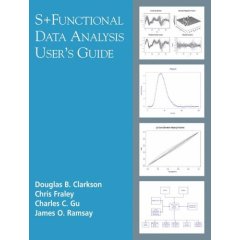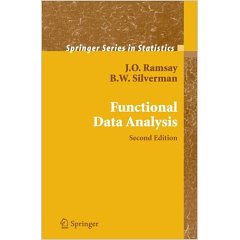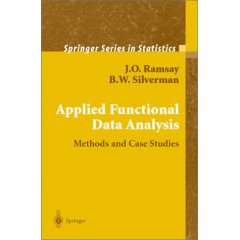Functional data analysis (FDA)
Functional data analysis (FDA) handles longitudinal data and treats
each observation as a function of time (or other variable). The
functions are related. The goal is to analyze a sample of functions
instead of a sample of related points.
FDA differs from traditional data analytic techniques in a number of
ways. Functions can be evaluated at any point in their domain.
Derivatives and integrals, which may provide better information (e.g.
graphical) than the original data, are easily computed and used in
multivariate and other functional analytic methods.
S+Functional Data Analysis User's Guide
by Douglas B. Clarkson, Chris Fraley, Charles C. Gu, James O. Ramsay
Functional Data Analysis (Springer Series in Statistics) (Hardcover)
by J. Ramsay, B. W. Silverman
Covers topics of linear models, principal components, canonical
correlation, and principal differential analysis in function spaces.
Applied Functional Data Analysis (Paperback)
by J.O. Ramsay, B.W. Silverman
Bernard W. Silverman's code site Applied Functional Data Analysis: Methods and Case Studies


